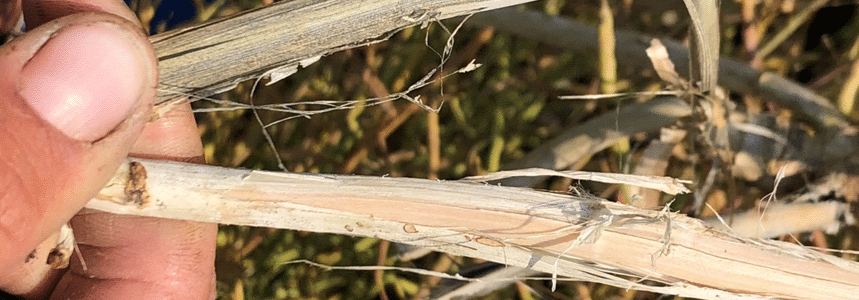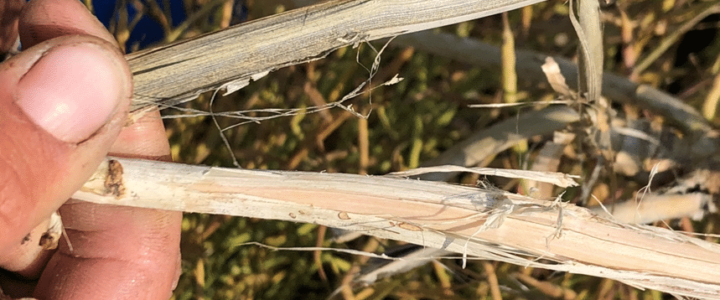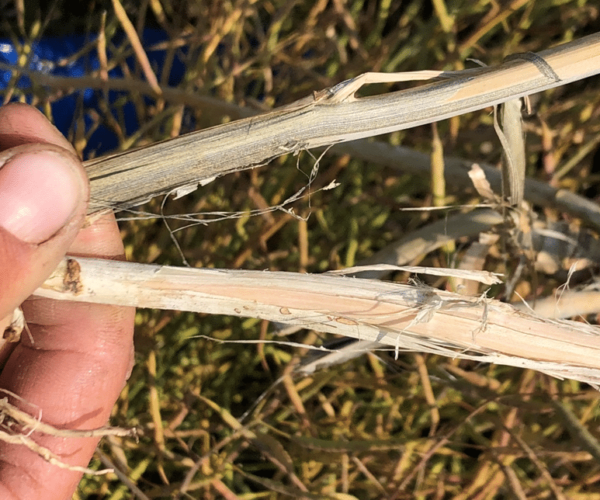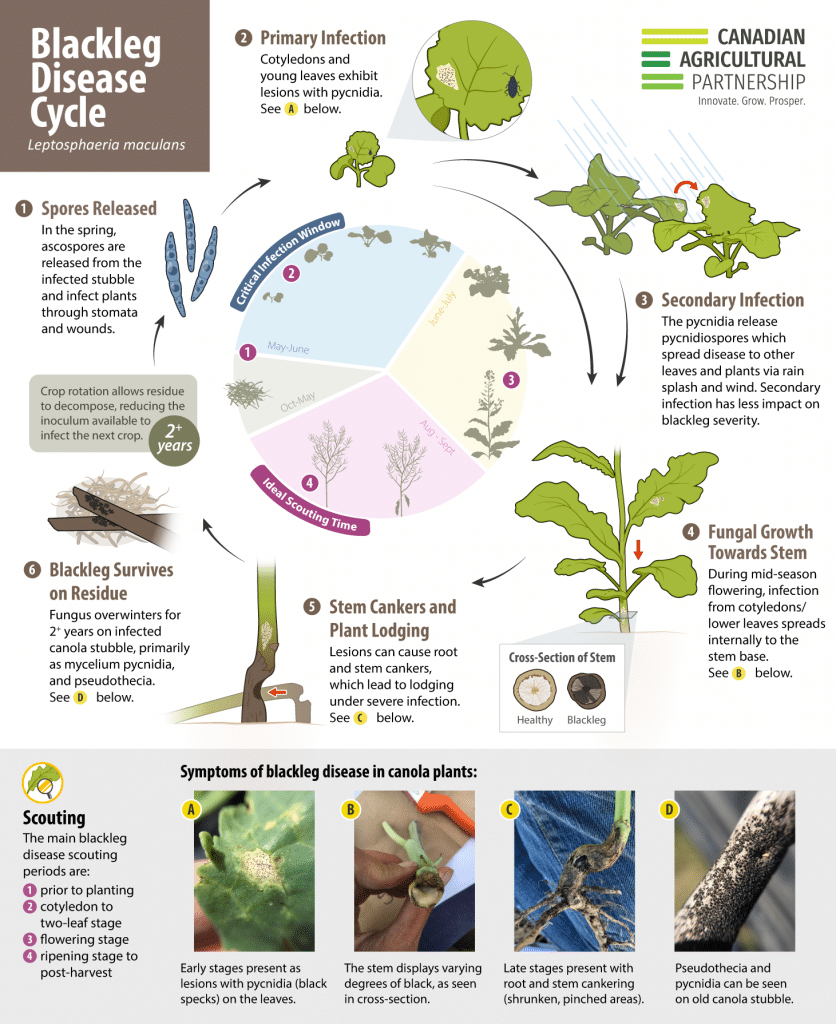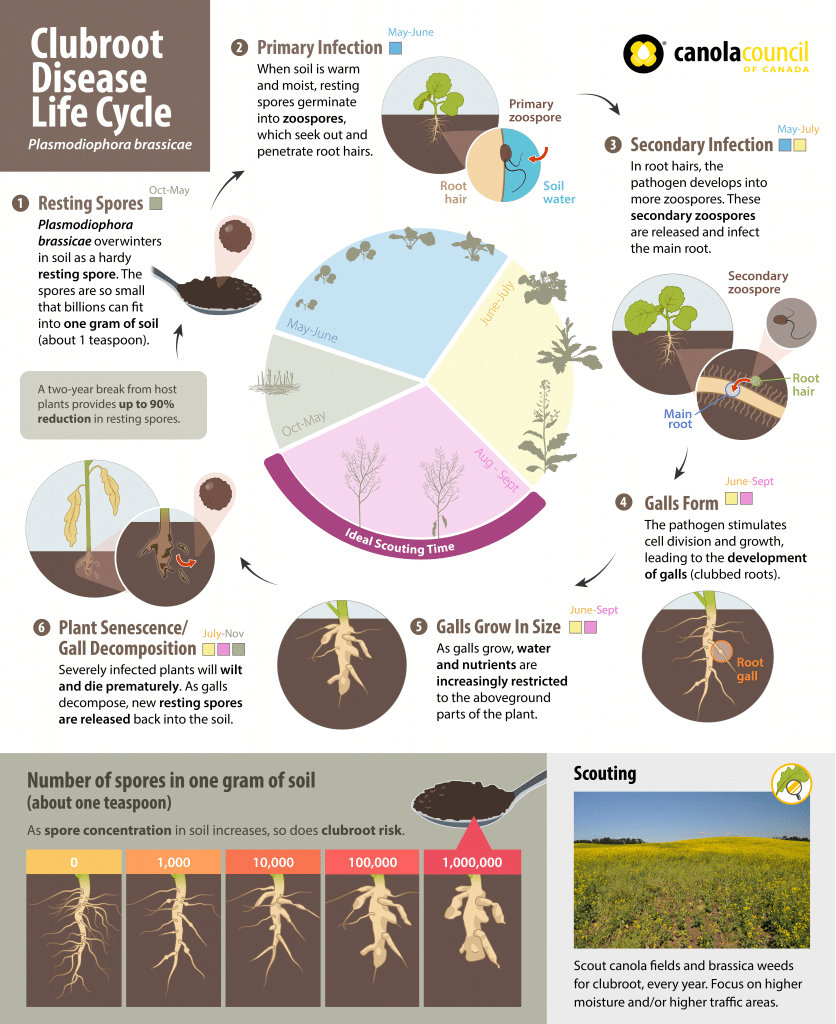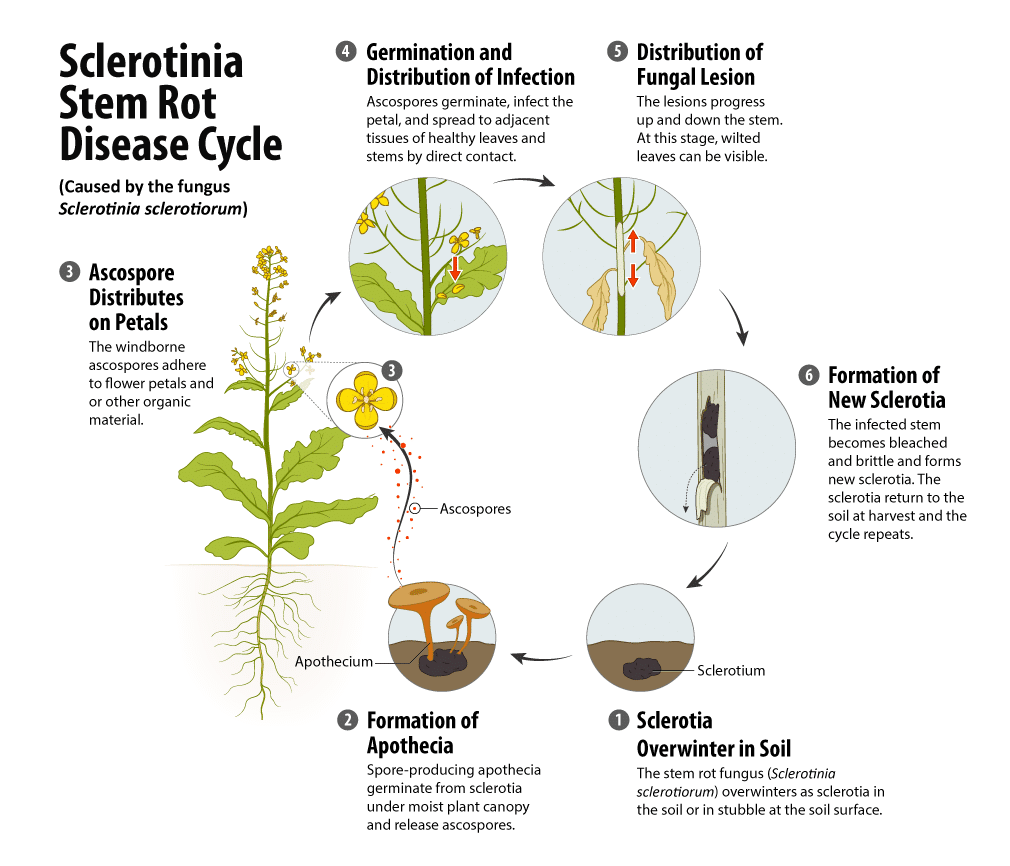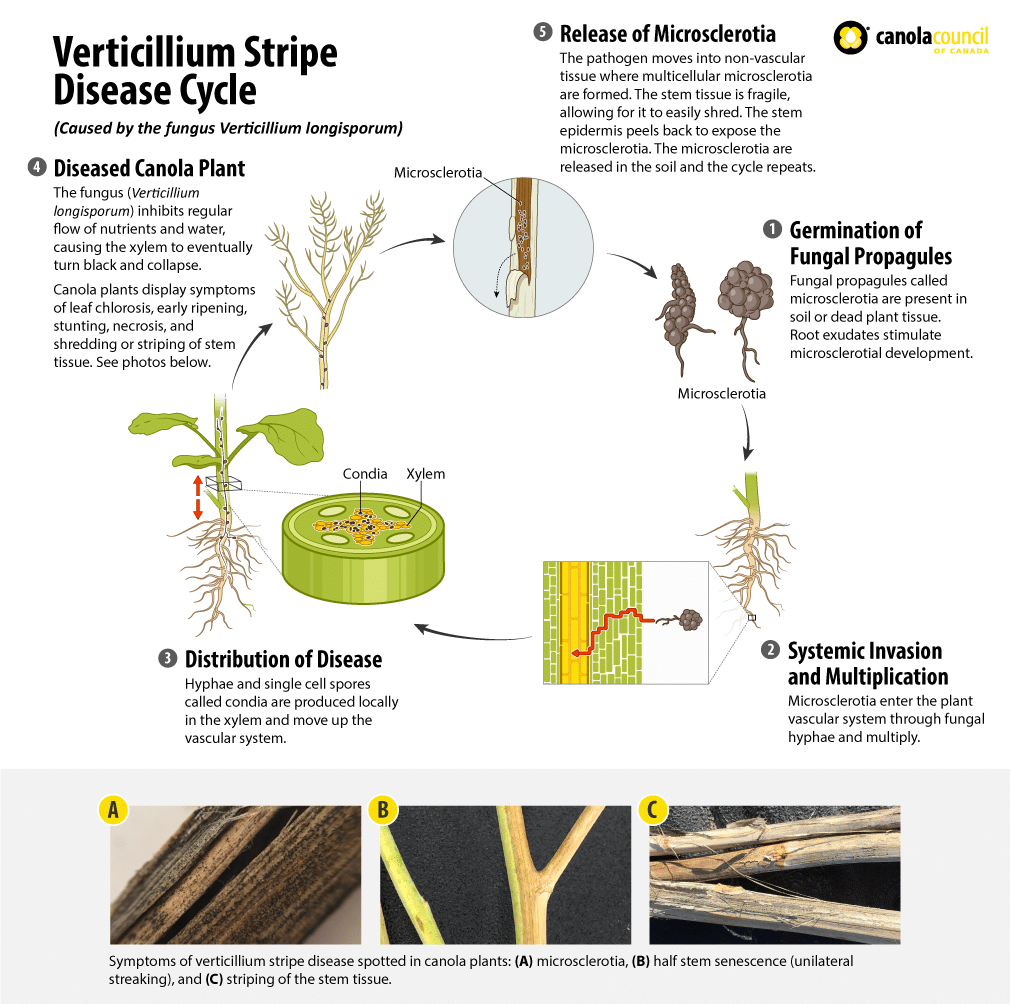The 13 Canola Agronomic Research Program (CARP) projects selected investigate management solutions related blackleg, clubroot, flea beetles, midges, sclerotinia, verticillium stripe and other biotic and abiotic threats work. The project durations range from two to five years, and are being led by research teams at various institutions across Canada.
These CARP projects are supported by funding from Alberta Canola, Manitoba Canola Growers, SaskCanola, and occasionally the Western Grains Research Foundation (WGRF) and are administered by the Canola Council of Canada (CCC). Read more on the 2024 program in the Canola Council of Canada’s Growers invest more than $3.7 million in 2024 to tackle canola agronomic priorities article release.
This program continues to focused on increasing yield and profitability, reducing production risk and enhancing sustainability and will consider research in the disciplines of agronomy, genetics and germplasm development. It is partially guided by the research priorities of the Canola Council of Canada, Alberta Canola, Manitoba Canola Growers, SaskCanola, and Western Grains Research Foundation (WGRF).
Preparations are currently underway for the next round of CARP, with the 2025 letters of intent submissions being accepted until Friday, June 28, 2024. Further details on current and upcoming programs are posted to the CARP page. To stay up to date on CARP timelines, subscribe to our Crop Production Research Notification emails.
Apply this on your farm
- Note this grower investment in canola research
- Refresh your canola disease cycle knowledge with these helpful infographics
- Watch this flea beetle threshold video
- Listen to the CW podcast about verticillium stripe.
- Browse completed CARP projects
Innovative 2024 CARP selections
The canola research studies featured in the 2024 CARP program are:
- Methods to isolate and maintain clubroot for improved resistance screening and labeling
- Led by Dr. Stephen Strelkov, this 3-year project aims to improve the effectiveness and reliability of clubroot resistance screening and labelling through developing best practices to maintain clubroot isolates in plants to avoid virulence shifts, and optimizing microlaser technology as a fast and efficient way to isolate single-spore isolates for characterization and distribution.
- In vitro culture of Plasmodiophora brassicae
- Dr. Mary Ruth McDonald from the University of Guelph will lead a research team to develop methods for consistent in vitro culture of P. brassicae and to produce pure cultures of some of the major pathotypes of P. brassicae (to better breed for resistance and improved management strategies) in this 2-year project.
- Population dynamics and monitoring programs for midges attacking canola
- This 3-year project led by Dr. Meghan Vankosky will initiate a new monitoring program for canola flower midge across the Prairies using pheromone traps and to continue monitoring for swede midge. This will help determine the degree of threat canola flower midge poses to canola production in Western Canada.
- New pre-breeding tools for canola- facilitating canola improvement by accessing diploid variation
- Dr. Steve Robinson will lead this 4-year project to develop specific germplasm accessible through the creation of bridging lines, enabling access to valuable alleles and generating a new technology that will be available to canola breeders. The genetic resources developed during this project can be made available to the canola industry supporting additional efforts to introduce necessary variation required by canola breeders.
- Comparative analysis of Verticillium longisporum lineages in the Canadian Prairies: Safeguarding canola production
- This 3-year project co-led by Zhongwei Zou and Harmeet Singh Chawla from Wilfred Laurier University and the University of Manitoba, respectively, aims to provide critical genetics and genomics knowledge on verticillium stripe by collecting and characterizing different V. longisporum isolates prevalent in the Prairies, evaluating pathogenicity and determining the genetic diversity, population structure and sequence variations of the isolates, as well as developing a KASP marker for V. longisporum population prevalence characterization in Canada.
- Expanding BnVQs (Valene-Glutamine) gene family against Sclerotinia sclerotiorum in canola
- Led by Dr. Zhongwei Zou, this 5-year project will screen sclerotinia resistance in B. napus genotypes and characterize the BnVQ genes that may play an important role in conferring resistance. This project will examine B. napus genotypes for sclerotinia resistance, and profile BnVQ genes and other associated genes for their role in providing enhanced resistance. Based on this information, gene edited canola lines will be developed that have overexpressed genes conferring enhanced resistance.
- Tracking the movement of flea beetles across the Canadian Prairies
- Dr. Boyd Mori will lead this 2-year project that will inform modeling and forecasting of flea beetle movement on the Prairies at different geographic scales through a flea beetle survey and to conduct a field-level study to determine if flea beetles associated with non-crop hosts contribute to populations in adjacent commercial canola crops.
- A comprehensive survey of verticillium stripe and establishment of a disease nursery in Morden, Manitoba
- This 3-year project led by Dr. Ahmed Abdelmagid of Agriculture and Agri-Food Canada Morden, aims to better understand and combat verticillium stripe of canola through conducting a comprehensive verticillium stripe survey and establishing a disease nursery in Morden, Manitoba.
- Volatile-based trapping and management of flea beetles
- Led by Dr. Maya Evenden, this 3-year project examines the use of synthetic copies of plant and insect-produced volatile signals through field experiments to attract spring and fall populations of striped and crucifer flea beetles in both commercial and experimental trap types. This project will also aim to predict damage based on number of flea beetles captured, and assess the effect of new chemical tools for monitoring and eventual “attract-and-kill” formulations.
- Clubroot pathotype evaluation and monitoring
- Dr. Stephen Strelkov will lead this 3-year project that aims to provide the foundation needed to drive clubroot research and resistance-breeding activities across Canada, clubroot will be tracked across the three prairies provinces for occurrence, severity and spread; generation of P. brassicae field isolates from infected roots; monitoring pathotype composition and virulence shifts, including identification of resistance-breaking pathotypes and their prevalence; and providing recommendations to grower and industry groups on emerging issues and pathotypes of particular concern.
- Investigating the conditions favoring verticillium stripe development and yield losses in canola
- This 4-year project co-led by Dr. Sheau-Fang Hwang and Dr. Fouad Daayf from the University of Alberta and the University of Manitoba, respectively, will examine the interactions between blackleg and verticillium stripe in field conditions, and to quantify the combined effects of the two diseases on canola at various growth stages, from seedling to seed set, under varying soil pH levels, and to generate a large collection of V. longisporum isolates from across the Prairies. This project will also screen canola lines and accessions for verticillium stripe resistance, and assess the effects of verticillium stripe seed infection rate on disease severity.
- Impact of synergistic interaction between V. Longisporum and L. maculans on canola yield
- Led by Dr. Hossein Borhan, this five-year project explores the compound effect of blackleg and verticillium stripe on susceptible and blackleg-resistant canola. This project will also discover new sources of resistance for verticillium stripe, develop susceptible and resistant control check lines for verticillium pathology tests, and develop and test the durability of B. napus introgression lines with multiple resistance genes against blackleg.
- Biocontrol of blackleg using carnivorous bacteria
- Dr. Paul Holloway of the University of Winnipeg aims to determine whether Myxobacteria (a group of soil bacteria which hunt and kill other bacteria and fungi) isolated in Manitoba can kill or inhibit the growth of Leptosphaeria maculan (the blackleg-causing fungus) and if they can protect canola plants from Leptosphaeria maculans under field-like conditions in this 2-year project.
Brief overviews of the 2024 CARP projects are available on the Hub and will be updated as the research progresses. All other CARP research is also available on the Hub, including completed and ongoing projects.
Published May 31, 2024

